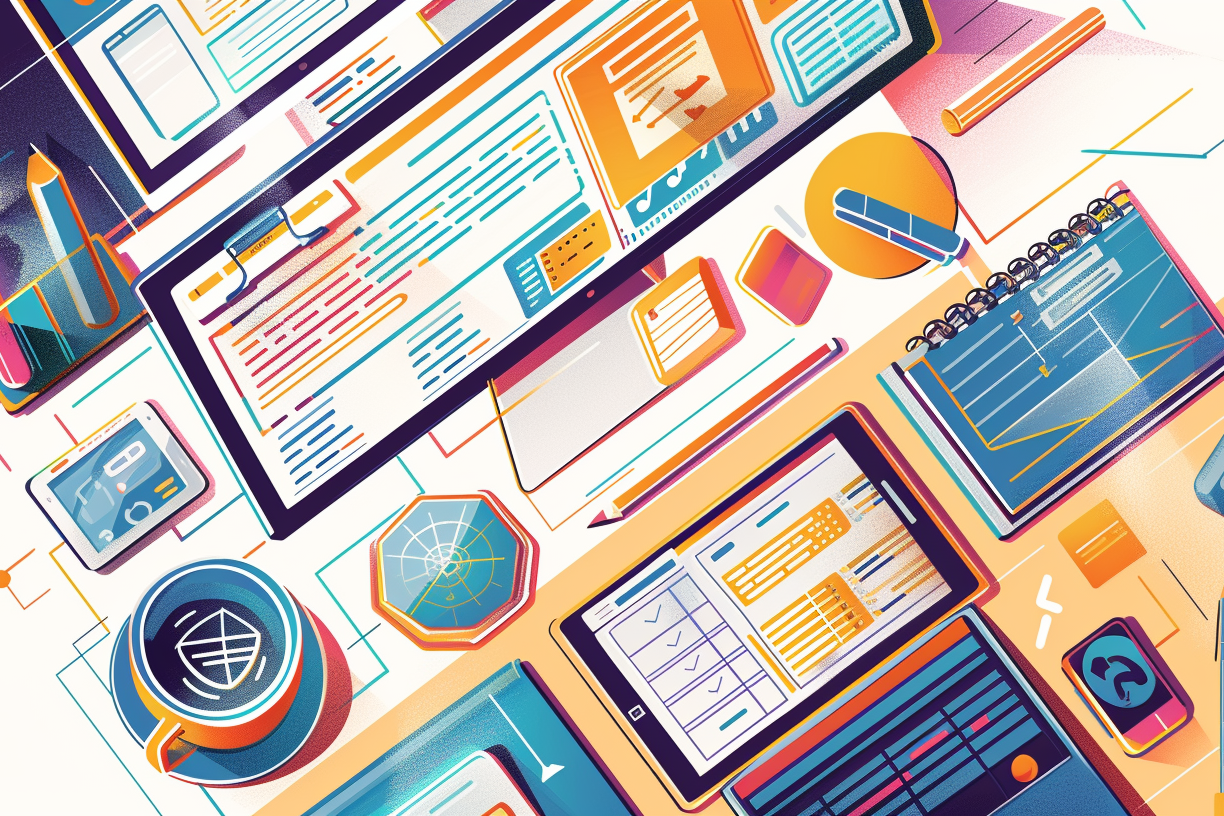In the ever-evolving realm of digital experiences, User Experience (UX) and User Interface (UI) design continue to be pivotal in shaping how users interact with technology. As we navigate through the current landscape, several trends are emerging, reflecting not just advancements in design aesthetics but a deeper understanding of user behavior and the need for seamless, intuitive interactions. In this exploration, we’ll delve into the latest trends in UX/UI design, unpacking how they redefine the digital experience.
1. Dark Mode Dominance
Dark mode has transcended its status as a novelty and has firmly established itself as a mainstream design choice. With benefits ranging from reduced eye strain to improved battery life on OLED screens, dark mode is no longer just an aesthetic preference but a functional one. Major platforms, applications, and websites are adopting dark mode options to cater to user preferences and provide a visually appealing alternative.
2. Neumorphism: The Rise of Soft UI
Neumorphism, or soft UI, is making waves in the design world. This approach blends elements of skeuomorphism and flat design, creating interfaces that mimic the real-world interaction of elements while maintaining a clean, modern aesthetic. Soft shadows, gradients, and a focus on depth contribute to a tactile, almost three-dimensional feel, enhancing the user’s sense of interaction.
3. Microinteractions for Macro Impact
Microinteractions, subtle animations or design responses to user actions, are gaining prominence for the emotional engagement they bring to interfaces. Whether it’s a button changing color on hover or a notification subtly sliding in, these microinteractions enhance the user experience by providing feedback and making interactions feel more natural. They contribute to a sense of fluidity, guiding users through the interface with finesse.
4. Voice User Interfaces (VUI)
With the rise of virtual assistants and smart devices, Voice User Interfaces (VUI) are becoming integral to UX/UI design. From voice commands to conversational interfaces, designers are focusing on creating seamless voice interactions. The challenge lies in balancing functionality with clarity, ensuring that users can effortlessly navigate and achieve tasks through voice commands.
5. Augmented Reality (AR) Integration
As AR technology becomes more accessible, integrating augmented reality into UX/UI design is a trend that promises to redefine user interactions. From immersive product experiences to interactive navigation, AR provides a new dimension to digital interfaces. Designers are exploring ways to seamlessly blend virtual and physical elements to create engaging and practical user experiences.
6. Data Visualization Brilliance
The importance of data in decision-making has given rise to a focus on innovative data visualization in UX/UI design. Designers are leveraging advanced charts, graphs, and interactive visual elements to present complex data in an understandable and visually appealing manner. This trend is especially significant in applications where data-driven insights play a key role.
7. Accessibility as a Priority
Accessibility in design is no longer an afterthought; it’s a fundamental principle. Designers are placing greater emphasis on creating interfaces that are inclusive and cater to users with diverse needs. This includes considerations for color contrast, readable fonts, keyboard navigation, and other factors that ensure an accessible experience for everyone.
8. Biometric Authentication Integration
With the ubiquity of biometric technology in smartphones and devices, designers are integrating biometric authentication seamlessly into UX/UI. Whether it’s fingerprint recognition, facial recognition, or even voice recognition, these technologies provide not just enhanced security but also a frictionless and intuitive user authentication process.
9. Hyper-Personalization through AI
Artificial Intelligence (AI) is playing a significant role in delivering hyper-personalized experiences. From tailored content recommendations to predictive user interfaces, AI analyzes user behavior to anticipate needs and preferences, creating a customized experience for each user. This trend is reshaping how designers approach personalization, moving beyond static interfaces to dynamic, adaptive designs.
10. Emphasis on Ethical Design
As technology plays an increasingly influential role in our lives, ethical considerations in design are gaining traction. Designers are conscious of the impact their creations have on user well-being, mental health, and privacy. From transparent data practices to user-friendly privacy settings, ethical design principles are becoming integral to the UX/UI design process.
In conclusion, the trends in UX/UI design are evolving to meet the dynamic needs and expectations of users in an increasingly digital world. The emphasis on dark mode, neumorphism, microinteractions, and ethical considerations reflects a maturing understanding of user psychology and the responsibility that comes with designing digital experiences. As we move forward, the intersection of AI, AR, and accessibility will likely play a pivotal role in shaping the next generation of user interfaces, making digital interactions more intuitive, personalized, and inclusive than ever before. Designers who stay attuned to these trends and embrace a user-centric approach will undoubtedly lead the way in crafting the digital experiences of the future.
Related Posts
February 13, 2024
Crafting Clarity: Designing a Weekly Framework
In the pursuit of enhanced focus and productivity, I embarked on the journey of…
January 11, 2024
Everyday Inspired by the Beauty of the Mountains
Last summer, I hit the road, chasing the silhouette of the Rockies and an…
March 25, 2022
Pros and Cons of a Brand Refresh
Considering a Company Rebrand: Pros and Cons As seen with Pepsi's bold…




